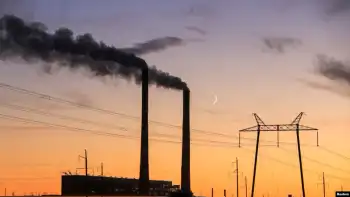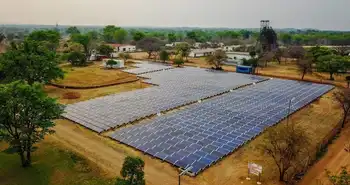Official touts atomic energy
"The only way to meet our future needs for power will be through nuclear energy," Bodman said at the annual meeting of Cambridge Energy Research Associates. "We are trying to streamline the licensing process to get some new plants built. The U.S. hasn't built a new nuclear plant in more than 30 years."
Nuclear power was dealt a crippling blow with the 1979 accident at the Three Mile Island plant in Pennsylvania. Since then, the electric-utility industry has turned to natural gas as its fuel of choice in the generation of electricity. But a fourfold increase in the price of natural gas, fed largely by increased demand from 70 new generating plants in Texas and more than 250 other generating plants throughout the United States, has caused the utility industry to swing away from natural gas for its future generating plants.
Texas has become a focal point for the new electricity- generating policy, with TXU Corp.'s proposal to build 11 coal-fired generating plants in North, East and South Central Texas. TXU and Gov. Rick Perry, who has ordered state regulators to speed consideration of TXU's proposal, both argue that the state faces potential blackout-causing electricity shortages as soon as 2010 if new capacity isn't brought on line, but environmentalists have formed a substantial coalition to fight the plants.
In addition to the expected lineup of environmental activists, opponents include mayors, such as Laura Miller of Dallas and Robert Cluck of Arlington, as well as the Baptist General Convention of Texas.
Business groups also have emerged as opponents, and one such group, the Clean Sky Coalition, has launched a substantial print and Internet campaign against the plants, with some of the money coming from natural gas producers.
Bodman on Wednesday declined to endorse or criticize TXU's plans for the new coal-fired plants, but he argued for "clean coal" technology and said, "I hope state regulatory bodies pay attention so that we burn coal in the cleanest way possible."
Bodman said he hadn't studied TXU's proposal, which would add more than 9,000 megawatts to its 18,300 megawatts of generating capacity. TXU says the conventional, pulverized-coal-burning system proposed for its plants would reduce carbon emissions because carbon would be captured rather than released into the atmosphere.
Although TXU has argued that its new technology would actually reduce emissions at an unspecified future date, opponents say that TXU and the state would be missing an opportunity to take advantage of new coal-gasification technology that is widely expected to be the future of coal-fired generation.
TXU has said that such technology, now in use at just a single generating plant in Florida, is not ready for the much larger scale needed in Texas.
At a news conference after his speech, Bodman was asked for his definition of "clean" coal technology. "I find the term 'clean coal' a difficult term to use," he said, but added that his definition includes a variety of technologies, including carbon sequestration and gasification. He didn't comment specifically on the TXU proposal.
TXU has said that it has long-term plans to add to nuclear generating capacity; it now has just one, 2,300-megawatt facility at Glen Rose south of Fort Worth. However, it takes 10 years to get permits for a plant, so nuclear power can't meet more immediate needs.
The TXU also asked the Environmental Defense Fund to pull a series of television ads attacking the coal-plant proposal, calling them false and misleading.
Related News

The UK’s energy plan is all very well but it ignores the forecast rise in global sea-levels
LONDON - IN concentrating on electrically driven cars, the UK’s new ten-point energy plans ignores the elephant in the room.
It fails to address the forecast six-metre sea level rise from global warming rapidly melting the Greenland ice sheet.
Rising sea levels and storm surge, combined with increasingly heavy rainfall swelling our rivers, threaten not only hundreds of coastal communities but also much unprotected strategic infrastructure.
New nuclear power stations proposed in this United Kingdom plan would produce radioactive waste requiring thousands of years to safely decay.
This is hardly the solution for the Green Energy future that our overlooked marine energy resource could…





